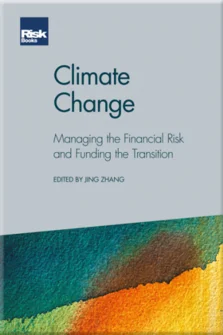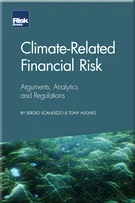Climate-related stress-testing: Transition risks
Pierpaolo Grippa and Samuel Mann
Foreword
Introduction
Sustainability for critical ecosystems: The future of risk management – more of the same or a new paradigm?
Climate change is a source of financial risk
The climate disclosure landscape in the finance sector
Green boxes? An overview of climate risk tools and analytics
Embedding climate change in financial metrics
Modelling climate physical risks
Climate-related stress-testing: Transition risks
Catastrophe risk modelling and climate change
Evidence-based climate stress testing
Climate risk drives a new paradigm in risk management
Incorporating climate change in asset allocation and portfolio construction
(Car)bon voyage: The road to low-carbon investment portfolios
Climate risk primer for community banks: Concepts and policies during a period of significant change
Next-generation analytics for climate finance
Climate finance post-COP26
Mobilising private funding
Climate-related “transition risk” is the risk stemming from the transition to a “low carbon economy” – that is, an economy that emits fewer greenhouse gases (GHG).11 See Grippa and Mann (2020), Appendix I, for a description of the main greenhouse gases. It can be driven by various factors, such as changes in policy and advances in technology, as suggested by Vermeulen et al (2018), or shifts in market sentiment (TCFD, 2017). An example for a policy shock would be a top-down decision to significantly reduce GHG emissions, including through the imposition of a carbon tax. Technological advances, on the other hand, are likely to reduce the cost of alternative sources of energy, potentially leaving fossil fuels and other GHG-emitting assets “stranded”.
The integration of climate-related risks in the stress-testing framework is at the top of the agenda for private financial institutions, central banks and financial regulators (such as the Network for Greening the Financial System); it is also a high priority for international financial institutions such as the World Bank and the International Monetary Fund (IMF).
In this chapter, three approaches are proposed to quantify
Copyright Infopro Digital Limited. All rights reserved.
As outlined in our terms and conditions, https://www.infopro-digital.com/terms-and-conditions/subscriptions/ (point 2.4), printing is limited to a single copy.
If you would like to purchase additional rights please email info@risk.net
Copyright Infopro Digital Limited. All rights reserved.
You may share this content using our article tools. As outlined in our terms and conditions, https://www.infopro-digital.com/terms-and-conditions/subscriptions/ (clause 2.4), an Authorised User may only make one copy of the materials for their own personal use. You must also comply with the restrictions in clause 2.5.
If you would like to purchase additional rights please email info@risk.net










